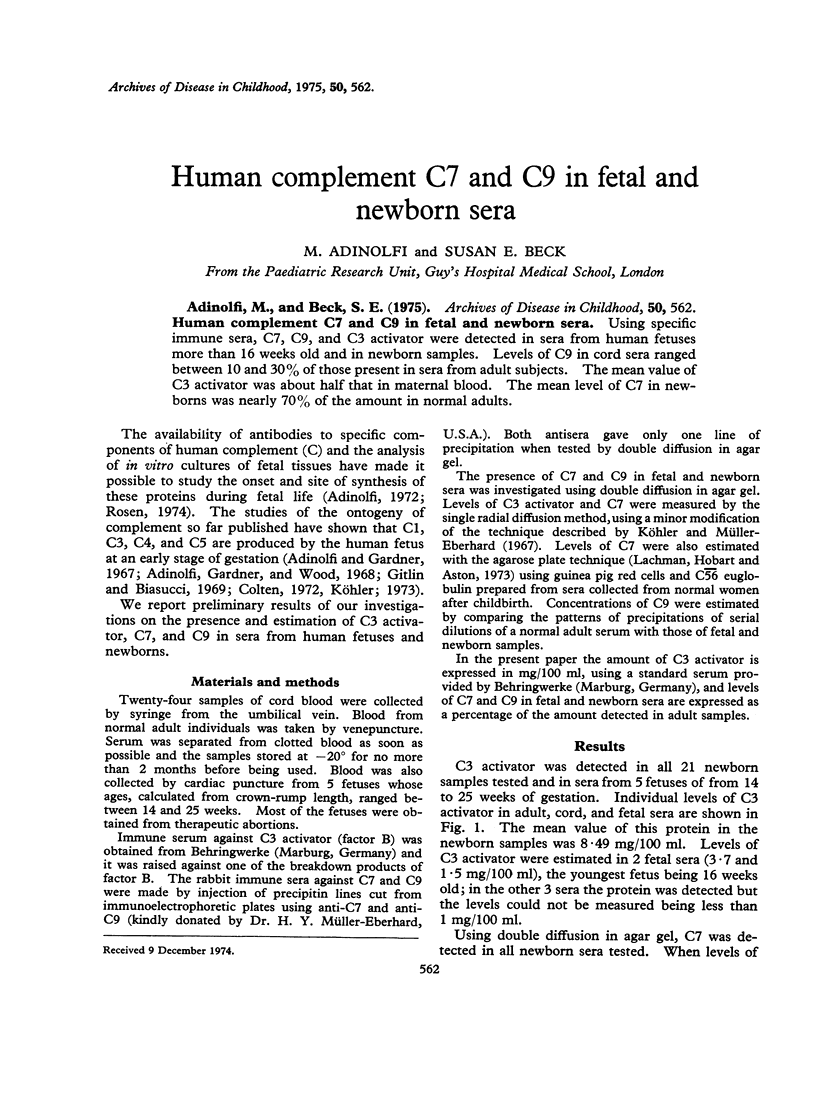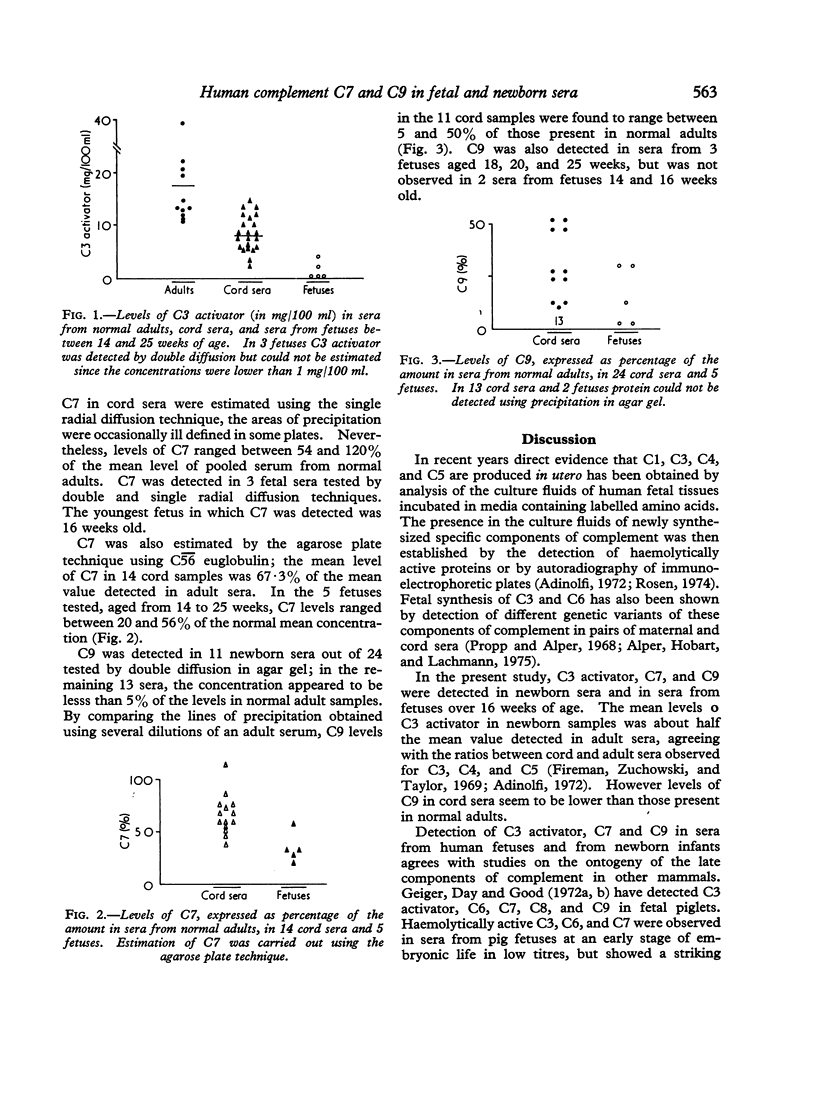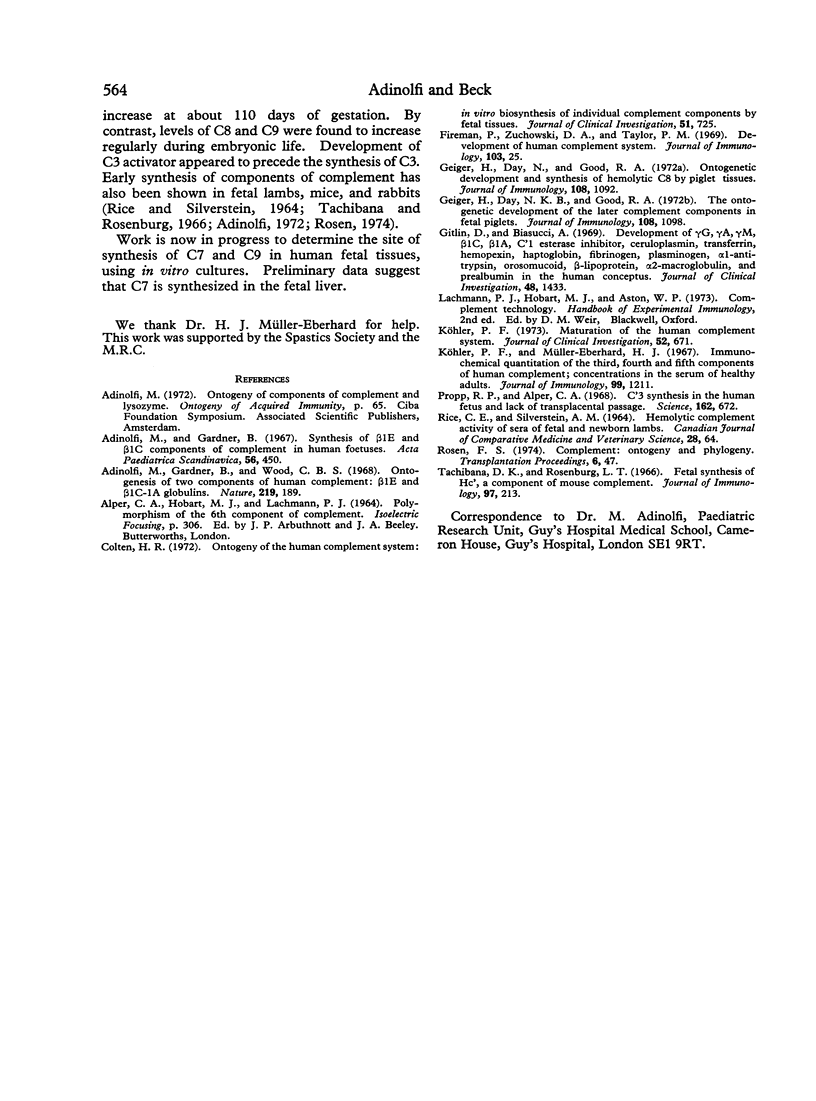Abstract
Using specific immune sera, C7, C9, and C3 activator were detected in sera from human fetuses more than 16 weeks old and in newborn samples. Levels of C9 in cord sera ranged between 10 and 30% of those present in sera from adult subjects. The mean value of Ce activator was about half that in maternal blood. The mean level of C7 in newborns was nearly 70% of the amount in normal adults.
Full text
PDF


Selected References
These references are in PubMed. This may not be the complete list of references from this article.
- Adinolfi M., Gardner B. Synthesis of beta-1E and beta-1C components of complement in human foetuses. Acta Paediatr Scand. 1967 Sep;56(5):450–454. doi: 10.1111/j.1651-2227.1967.tb15407.x. [DOI] [PubMed] [Google Scholar]
- Adinolfi M., Gardner B., Wood C. B. Ontogenesis of two components of human complement: beta1E and beta1C-1A globulins. Nature. 1968 Jul 13;219(5150):189–191. doi: 10.1038/219189a0. [DOI] [PubMed] [Google Scholar]
- Colten H. R. Ontogeny of the human complement system: in vitro biosynthesis of individual complement components by fetal tissues. J Clin Invest. 1972 Apr;51(4):725–730. doi: 10.1172/JCI106866. [DOI] [PMC free article] [PubMed] [Google Scholar]
- Fireman P., Zuchowski D. A., Taylor P. M. Development of human complement system. J Immunol. 1969 Jul;103(1):25–31. [PubMed] [Google Scholar]
- Geiger H., Day N., Good R. A. Ontogenetic development and synthesis of hemolytic C8 by piglet tissues. J Immunol. 1972 Apr;108(4):1092–1097. [PubMed] [Google Scholar]
- Geiger H., Day N., Good R. A. The ontogenetic development of the later complement components in fetal piglets. J Immunol. 1972 Apr;108(4):1098–1104. [PubMed] [Google Scholar]
- Gitlin D., Biasucci A. Development of gamma G, gamma A, gamma M, beta IC-beta IA, C 1 esterase inhibitor, ceruloplasmin, transferrin, hemopexin, haptoglobin, fibrinogen, plasminogen, alpha 1-antitrypsin, orosomucoid, beta-lipoprotein, alpha 2-macroglobulin, and prealbumin in the human conceptus. J Clin Invest. 1969 Aug;48(8):1433–1446. doi: 10.1172/JCI106109. [DOI] [PMC free article] [PubMed] [Google Scholar]
- Kohler P. F. Maturation of the human complement system. I. Onset time and sites of fetal C1q, C4, C3, and C5 synthesis. J Clin Invest. 1973 Mar;52(3):671–677. doi: 10.1172/JCI107228. [DOI] [PMC free article] [PubMed] [Google Scholar]
- Kohler P. F., Müller-Eberhard H. J. Immunochemical quantitation of the third, fourth and fifth components of human complement: concentrations in the serum of healthy adults. J Immunol. 1967 Dec;99(6):1211–1216. [PubMed] [Google Scholar]
- Propp R. P., Alper C. A. C'3 synthesis in the human fetus and lack of transplacental passage. Science. 1968 Nov 8;162(3854):672–673. doi: 10.1126/science.162.3854.672. [DOI] [PubMed] [Google Scholar]
- Rosen F. S. Complement: ontogeny and phylogeny. Transplant Proc. 1974 Mar;6(1):47–50. [PubMed] [Google Scholar]
- Tachibana D. K., Rosenberg L. T. Fetal synthesis of Hc', a component of mouse complement. J Immunol. 1966 Aug;97(2):213–215. [PubMed] [Google Scholar]


